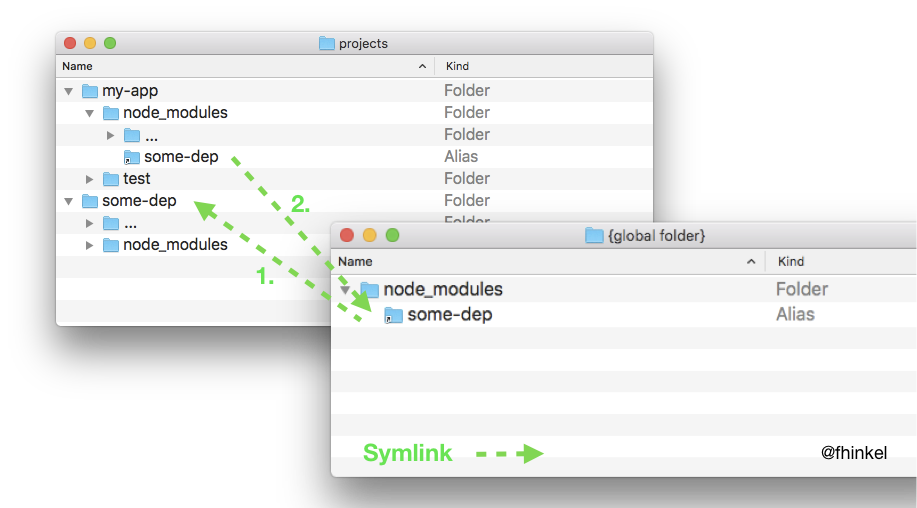[Fuente: https://medium.com/dailyjs/how-to-use-npm-link-7375b6219557]
Simultaneously Working on Application and Dependency
Sometimes you need to work on application code and a dependency at the same time. You might be the author of a dependency and don’t have good test coverage yet. The application can serve as an end-to-end test for the dependency. Maybe you need to debug an issue in your application and the problem seems to be in the dependency sources.
You could make changes in node_modules and manually copy the changes to the git repository of the dependency once you are done. But there is a much cleaner approach: npm link.
Usage
Package linking is a two-step process:
- Create a global symlink for a dependency with
npm link. A symlink, short for symbolic link, is a shortcut that points to another directory or file on your system. - Tell the application to use the global symlink with
npm link some-dep.
cd ~/projects/some-dep
npm link # Step 1.
cd ~/projects/my-app
npm link some-dep # Step 2.
You can edit, transpile, run tests, or commit as usual in some-dep. All while my-app runs with the changes you made to some-dep. The symbolic links are local and will not be committed to git. When you are ready to share your code, publish a new version of some-dep or push to a branch that you specify in my-app’s package.json:
cd ~/projects/my-app
npm install — save some-dep@fhinkel/some-dep#experimental-branch
Debugging
If you use VSCode and want to set breakpoints in some-dep, you need to enable symlinks in the debugger for my-app. Do so by setting



